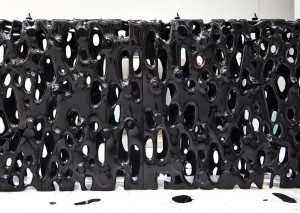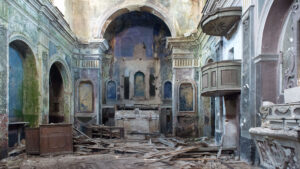- full price € 15 at the box office - € 14 online
- reduced price € 12 at the box office - € 11 online
– for young people aged between 18 and 25 (not yet turned 25);
– for groups of 15 people or more;
– La Galleria Nazionale, Museo Ebraico di Roma ticket holders;
– upon presentation of ID card or badge: Accademia Costume & Moda, Accademia Fotografica, Biblioteche di Roma, Centro Sperimentale di Cinematografia, Enel (for badge holder and accompanying person), FAI Fondo Ambiente Italiano, Feltrinelli, Gruppo FS, IN/ARCH Istituto Nazionale di Architettura, Sapienza Università di Roma, LAZIOcrea, Palazzo delle Esposizioni, Amici di Palazzo Strozzi, Accademia Nazionale di Santa Cecilia, Scuola Internazionale di Comics, Teatro Olimpico, Teatro dell’Opera di Roma, Teatro di Roma, Università degli Studi di Roma Tor Vergata, Youthcard; - August promo for Lazio residents € 7
valid from August 1st to August 31st, upon presentation of an identity document verifying residency in the Lazio Region
- open € 18
valid for one year from the date of purchase
- free
– minors under 18 years of age;
– myMAXXI cardholders;
– on your birthday presenting an identity document;
– upon presentation of EU Disability Card holders and or accompanying letter from hosting association/institution for: people with disabilities and accompanying person, people on the autistic spectrum and accompanying person, deaf people, people with cognitive disabilities and complex communication needs and their caregivers, people with serious illnesses and their caregivers, guests of first aid and anti-violence centres and accompanying operators, residents of therapeutic communities and accompanying operators;
– MiC employees;
– journalists who can prove their business activity;
– European Union tour guides and tour guides, licensed (ref. Circular n.20/2016 DG-Museums);
– 1 teacher for every 10 students;
– AMACI members;
– CIMAM International Committee for Museums and Collections of Modern Art members;
– ICOM members;
– from Tuesday to Friday (excluding holidays) European Union students and university researchers in art history and architecture, public fine arts academies (AFAM registered) students and Temple University Rome Campus students;
– IED Istituto Europeo di Design professors, NABA Nuova Accademia di Belle Arti professors, RUFA Rome University of Fine Arts professors;
– upon presentation of ID card or badge: Collezione Peggy Guggenheim a Venezia, Castello di Rivoli Museo d’Arte Contemporanea, Sotheby’s Preferred, MEP – Maison Européenne de la Photographie;
Collection
MAXXI’s Collection of Art and Architecture represents the founding element of the museum and defines its identity. Since October 2015, it has been on display with different arrangements of works.







































31 October 2012 – 03 March 2013 exhtended until 10 March
Gian Ferrari Hall
curated by Monia Trombetta
MAXXI is devoting the exhibition Mirabilia Urbis to Grazia Toderi, Leone d’Oro at the Venice Biennale in 1999 and one of the most representative members of the Italian generation of the 1990’s.
?The work from which the exhibition takes its name was created by the artist in 2001 and joined the MAXXI Arte permanent collection this year thanks to Renata Novarese’s generous donation.
Rome plays a leading role in the three works by Grazia Toderi on show: three video projections for three different visions of the capital from above, teeming with lights or cloaked in darkness, in which the rhythm of streets, buildings and piazzas becomes pattern, evocation, dilated and stratified space, making the portrait of the “eternal city” all the more profound.
Mirabilia Urbis (2001) marks the beginning of the exhibition and is shown together with Rosso (2007), already part of the collection, and Mirabilia Urbis (2012), a large-scale double projection realised by Grazia Toderi for this occasion.
[widgetkit id=25532]